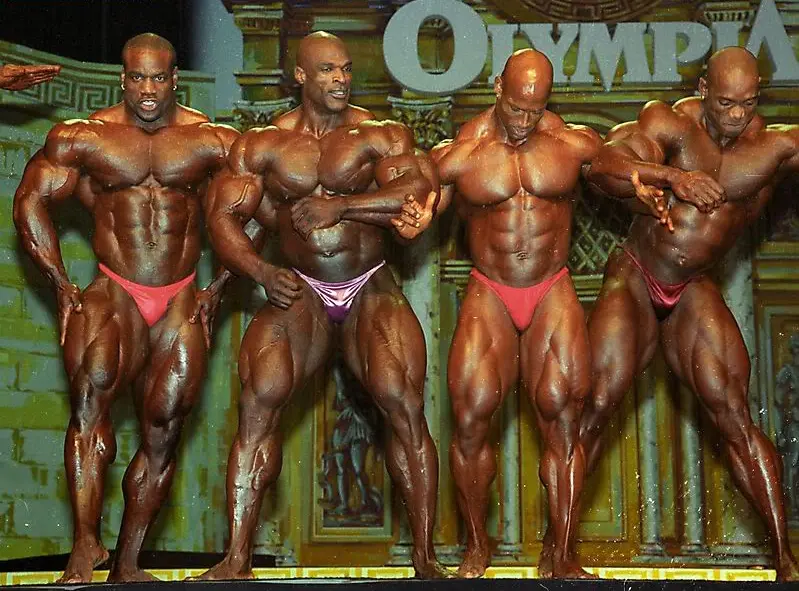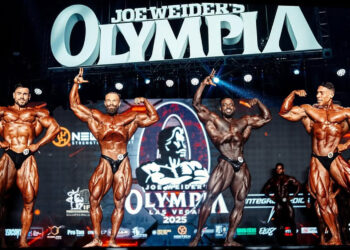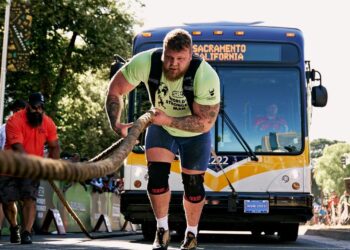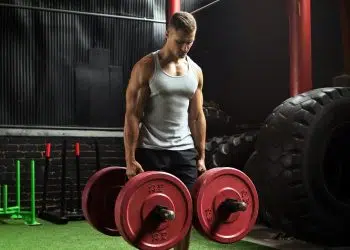The Cossack Squat targets a specific area of function that most leg exercises simply aren’t as useful for. Squats and lunges work the legs while standing in one place and moving forward and backward (sagittal plane of movement) but they don’t address the side-to-side movement which involves training your lower body in an entirely different direction.
So, we should be incorporating exercises that require this function not only for aesthetics and strength but also for the health of your joints, preventing imbalance, and also for improved multi-planar performance.
So, let’s go over the Cossack squat so you can start including it in your leg workouts…
Muscles Worked
Although the Cossack squat involves a different plane of movement than the more popular leg exercises, it still works all of the same muscles but, of course, to a different extent.
But proper technique will maximize the activation of each muscle which is why it’s very important to find a position that works best for you.
- Quads
- Hamstrings
- Glutes
- Calves
- Core
- Postural muscles of the back
- Adductors
- Hip flexors
How To Do The Cossack Squat
Here are step-by-step instructions for the Cossack squat which you’ll want to do with your body weight or a relatively lighter dumbbell/kettlebell at first which should be sufficient for anyone new to this movement.
Level Up Your Fitness: Join our 💪 strong community in Fitness Volt Newsletter. Get daily inspiration, expert-backed workouts, nutrition tips, the latest in strength sports, and the support you need to reach your goals. Subscribe for free!
Although, you never want to use weight that won’t allow you to get more than 5-6 reps even when you do become more experienced. You want to ensure the safety of your joints and groin area and starting off heavy may cause unnecessary stress.
Starting Position
If using additional resistance, hold your tool of choice up by your chest so that you can comfortably perform the movement with good posture.
- Take a wider than hip-width stance with feet pointed slightly outward so that you can shift your weight from left to right as if you were doing a side-to-side lunge without lifting your foot from the ground.
- Keep your back straight maintaining an upright posture.
You’ll probably have to adjust your stance sometimes to find the most optimal position.
The Lateral Squat
- Now engage your core and shift your entire body to one side while squatting down so that your weight is on your foot.
- You only need to go down far enough so that your thigh is parallel to the floor (although, you can go deeper) but make sure your shin is mostly vertical and your knee is not moving too far forward over your feet. Although, it will naturally have to a little in order to do the exercise effectively. In other words, try to keep the weight on your heel and midfoot.
- Your non-working foot can move to accommodate the movement but keep that leg straight with your foot turned outward on its heel.
Repeat On The Opposite Side
- Push through your heel to stand up and then repeat the movement on the opposite side.
When doing the Cossack squat, it’s important to adjust as needed so that you feel the muscles working whether that means adjusting your feet or body angle, or maybe you need to experiment with squat depth.
Not everyone will have the same experience so it’s important to work with your body to ensure each rep is optimal for you.
Also, you can stand upright before shifting to the other foot or you can make it one fluid movement. And for the absolute beginners, feel free to hold onto a solid surface to help you balance as you get better at this exercise.
Watch Cossack Squat Mobility Exercise Guide
Benefits Of The Cossack Squat
The Cossack squat is just one essential part of the foundation which makes up the kinetic chain. Therefore, the biggest benefit of this exercise is going to be what it offers functionally.
Here are some of the main benefits of this movement…
Improves muscularity and strength
While this exercise won’t have the same effect as the squat or deadlift for sheer muscle gains, you will feel sore the next day and that’s because you’re stimulating more/different muscle fibers due to the plane of movement.
Therefore, you’ll experience some hypertrophy, and of course, you’re improving the strength of this area as well.
But what’s also extremely beneficial about this movement is that not only are you overloading the legs, but you doing your hips a favor as well by strengthening them in this plane.
And… your strengthening the gluteus medius muscle which plays a big role in stabilization of the body during single-leg functions.
As a result, you’re going to be that much more functional.
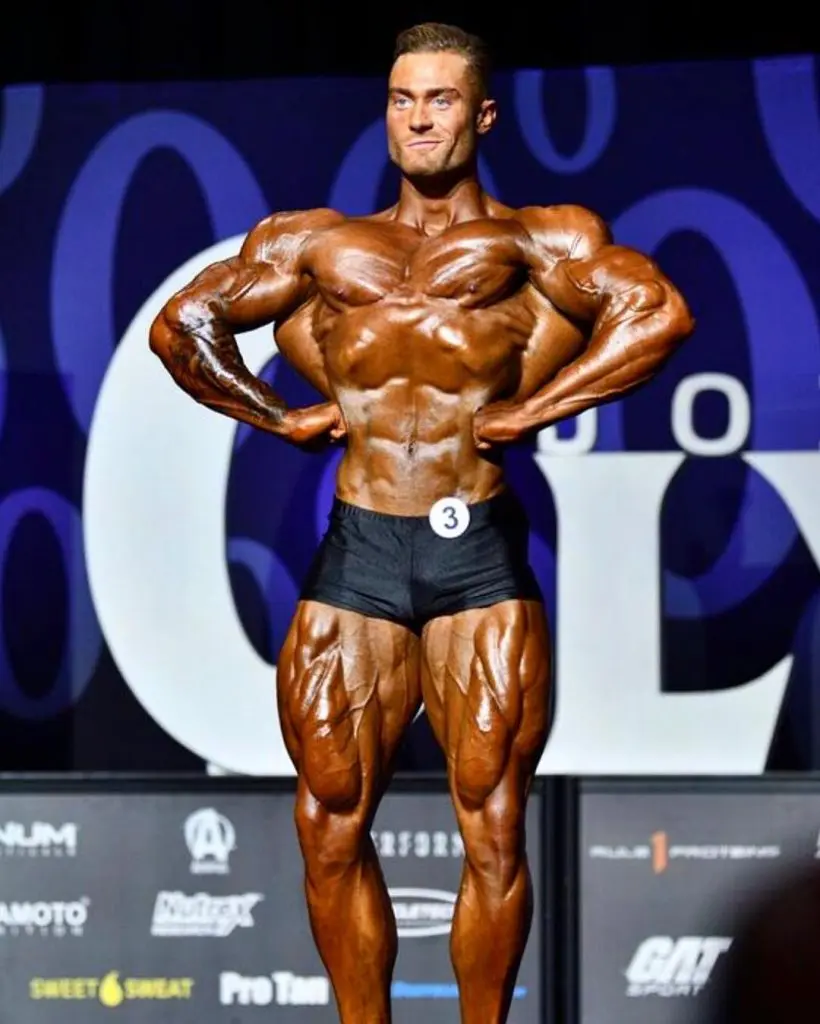
Better lateral/unilateral range of movement and flexibility
Many sports and physical activities require that you move and have functional balance in all three dimensions. So, if you can effectively work on improving your Cossack you can be even more athletic and explosive from the bottom of the lateral (unilateral) squat position with equal force from each side.
Plus, unilateral (affecting one side) exercises are a crucial part of any workout routine, especially for athletes to be able to have the agility, explosiveness, and all-around athleticism.
But another benefit we’d like to mention is that you can also improve your groin flexibility by becoming more proficient in this movement but definitely don’t overdo it, especially at first to allow for the adjustment.
Joint Mobility
We’ve already established that the Cossack squat requires your joints to function differently in order to accommodate this alternative plane of movement.
Therefore, if you keep incorporating this movement, the mobility in your joints (hips, knees, and ankles) should improve as a result of training this motion since our bodies do have the ability to do multi-planar movements.
Injury Prevention
Imbalances are inconvenient because, at any time, you could get injured, cut yourself short on performance, and/or suffer from the aesthetic repercussions of not having a complete physique due to neglecting one area.
Muscle imbalances often cause one muscle to overcompensate for another and this is structurally detrimental both short and long term especially if you’re very active and/or engage in strength training.
Well, by ensuring you hit every angle possible, you’d probably sleep a little better at night knowing you haven’t cut any corners and you won’t have to worry as much about injuries.
So, take some time to make this exercise a regular part of your routine whether you use it to prepare your joints and hips for heavy squats or other big lifts, or as a standalone exercise during active recovery phases. But regardless of how you choose to implement it, focus on maximizing its effectiveness each time.
3 Variations of The Cossack Squat
Sure, the Cossack squat in its simplest form is an excellent movement. But, variations provide us with more options which is great for mixing things up and providing ourselves with even more of a challenge while still reaping the same benefits.
Here are some effective variations…
Level Up Your Fitness: Join our 💪 strong community in Fitness Volt Newsletter. Get daily inspiration, expert-backed workouts, nutrition tips, the latest in strength sports, and the support you need to reach your goals. Subscribe for free!
Cossack Squat (Hamstring Focus)
This is a slight variation of the basic version but it focuses more on the hamstrings.
To do it…
- Setup exactly how you would if doing the standard version.
- As you squat down on your left side, rotate your torso toward your right side, keeping your right leg straight but with only your heel planted on the floor to get a deep stretch in your hamstring.
- Push up through your heel feeling the hamstring muscle contract as you raise back up.
- Repeat on the other side.
Landmine Cossack squat
Using a landmine set up is a great way to load this movement and also help you to balance a little as well. But another benefit of this variation is that the landmine setup when done properly forces you into maintaining good posture while keeping your hips back.
So, like your typical landmine exercise, you’ll want to hold the end of the barbell using both hands, then squat side to side. You can place a barbell in a corner of a wall or use a dedicated landmine setup if you have access to one.
Barbell Cossack squat
The barbell adds more resistance and it forces you to work on your balance while also providing more of a challenge, therefore improving strength and building muscle.
Also, it’ll force you into maintaining a good posture which is always good to practice.
Cossack Squat Alternatives
Side/Lateral lunge
The lateral lunge is very similar to the Cossack squat but the only difference is you’ll start with your feet together rather in a Sumo stance. However, the side lunge may not involve as deep of a range of motion as the Cossack squat although you can certainly adjust to ensure that you do.
Pistol squat
The pistol squat or single-leg squat is for individuals more advanced in their training. But it’s a great way to train the same muscles while mastering unilateral balance and stability, and you’ll seldom need to use additional resistance.
90/90 hip mobility
This is one of the best drills you can do for the health and mobility of your hips. It’s definitely not easy if done correctly but this movement will have great carryover to all lower-body movements which involve the hips.
Who Should Do The Cossack Squat
Strength athletes
The cossack squat or a similar movement which allows a lifter to become strong and functional in the lateral position is going to be crucial for overall success. The reason being is that, unlike any other sports, Strongman, powerlifting, and weightlifting all require the athlete to train and compete using larger ranges of joint motion while also having to move extreme amounts of weight at the same time.
And this is the last situation that’d you want to find out you have imbalance/weakness in one specific area which then causes overcompensation of other muscles, resulting in suboptimal performance and even injuries. So, the Cossack can be extremely useful in this situation.
- A good set/rep range for strength athletes is 3-4 sets x 6-10 reps. Use additional resistance if needed and also feel free to incorporate pause reps and try different tempos.
Bodybuilders
If the training focus is hypertrophy (which is what bodybuilding is), then you still need to be able to have full, multi-planar function. Bodybuilders still train using full ranges of motion through the joints, although it’s not as much required compared to strength sports to get the benefit.
But because bodybuilding is a sport based on aesthetics and appearance, every muscle that can be developed, should be developed to its max to ensure you have the most complete physique possible.
- A good set/rep range for bodybuilders is 3-4 sets x 8-12+ reps. Use additional resistance if needed and also feel free to incorporate pause reps and try different tempos.
General sports
We mentioned previously that the Cossack squat allows athletes to become more proficient in the lateral and unilateral position of a squat-type movement. Well, this is absolutely crucial if you want to be the best athlete you can possibly be.
Jumping from any position, moving side-to-side and in all directions, explosiveness, stability, and just the ability to be able to adjust your body position in any team or individual sport is a must. And this is why the Cossack squat and other similar movements are so important as a part of athletic training.
- A good set/rep range for athletes is 3-4 sets x 10-20 reps. Use additional resistance if needed and also feel free to incorporate pause reps and try different tempos.
General fitness
Whether you’re just a regular gym-goer, or you train at home with just your bodyweight, the Cossack squat is still very beneficial to your overall fitness because muscle imbalance and injury can happen to anyone regardless of how active you are or how heavy you like to train.
And this is especially important for the aging population since these individuals tend to lose mobility, flexibility, and function in general. So, lateral lower body exercises should also be incorporated as a preventative measure against the effects aging has on the human body.
How To Include The Cossack Squat In Your Training Regime
If you’ve not yet incorporated the Cossack squat or even a lateral lunge, then you’ll need to start off by just getting adjusted to the movement. So, to start you may want to just squat down to where your upper legs are slightly above parallel to the floor.
For your first few workouts, do a couple of sets with just your body weight and make sure your form is perfect (you’ll know if you feel it in your knees or experience any other discomfort).
Then, squat down a little lower still using your own bodyweight although at this point you can probably use a 10lb dumbbell which can even help with balance and maintaining a good posture.
Once you’re entirely comfortable, feel free to add a little more weight and you can even try the variations above.
If using additional resistance, make sure your ability to execute the movement with good form is not compromised because then you could be doing more harm than good in this case.
So, since the purpose of the Cossack squat is to improve strength, performance, muscle imbalance, and promote hypertrophy, sticking in the 8-20 rep range should be very effective overall. So, mix it up based on your workout goal. This will also determine how much weight you use.
If you decide to use the Cossack squat as a warmup, then that’s fine but take it seriously and focus on the movement to ensure you’re getting the most benefit from it.
You still do need to take this exercise just as seriously as you do squats, deadlifts, and leg presses.
And as explained earlier, it’s very important for building and maintaining a stable foundation.
Otherwise, you increase your chances greatly of developing imbalance, and injury, especially if you participate in sports or similar activities that require quick movements and unilateral function.
Wrapping Up
The benefits of the Cossack squat should be convincing enough for you to incorporate it into your leg training routine. Not only will it hit new muscles of your lower body but it’s a great strength and functional exercise for the reasons mentioned above.
Remember, it’s not a movement that you should go super heavy with so focus more on the functional aspect which will have plenty of carryover to your other movements and structural health in general.

